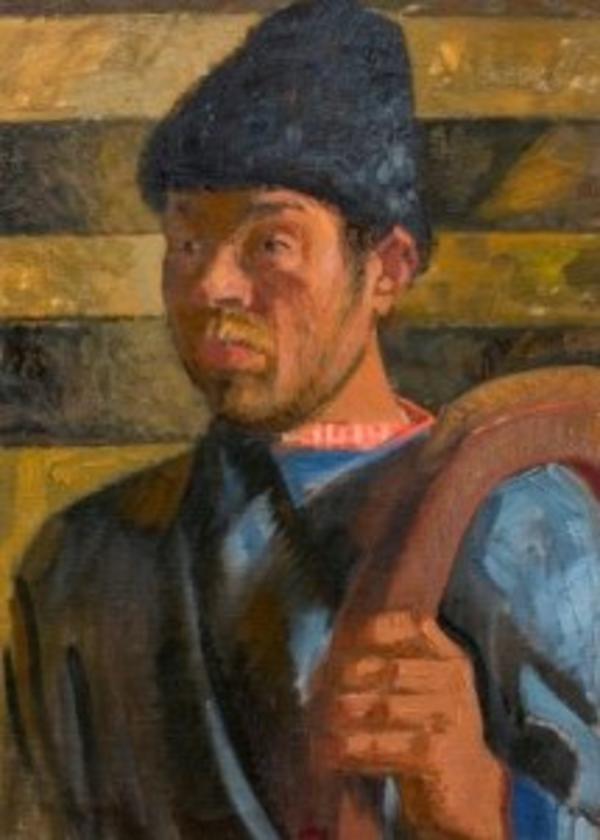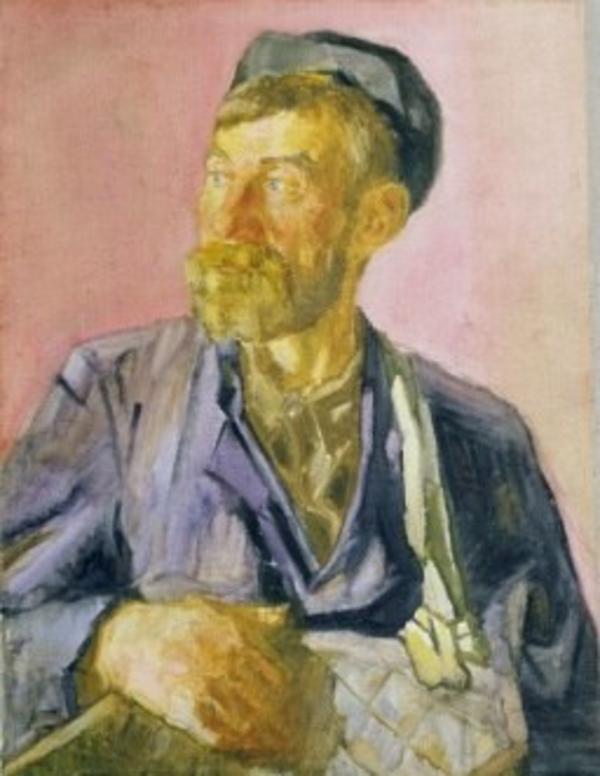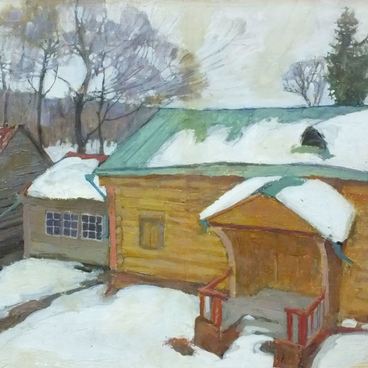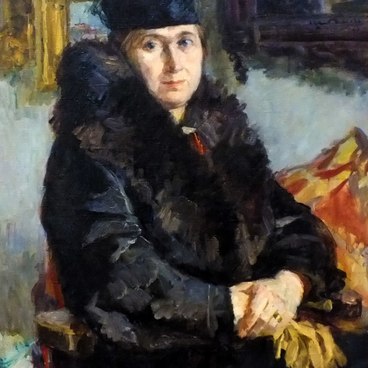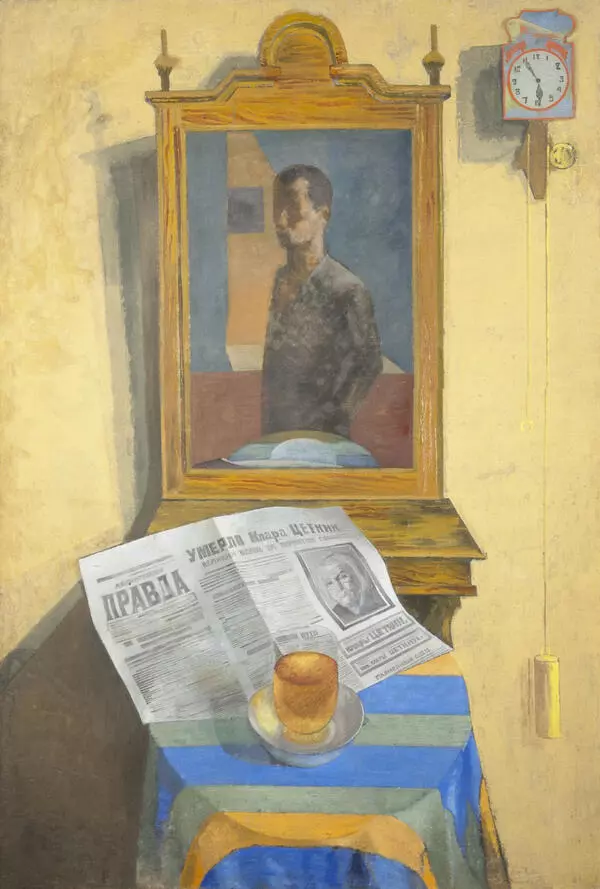In Vladimir Malagis’s painting A Guy with the Balalaika we see a young man wearing a grey jacket and a dark cartouche with a musical instrument in his left hand. This work reflects the main direction of his work: the artist created portraits of people of the new Soviet era.
Vladimir Malagis was born in the province of Courland, most of which is now located in Latvia. He lost his father too early. After the death of the breadwinner, the teenager went to try his luck in the capital, where he was able to find a job as a student in the craft workshop of the painter Kyun. He had to work for shelter and food. At the same time, the boy was attending drawing classes at the Society for the Promotion of Arts, where he successfully accomplished the program in four years.
After the revolution, he studied at the Petrograd State Free Art Workshops, an educational institution established on the site of the former Imperial Academy of Arts. However, in 1920 the young artist volunteered for the Red Army. He managed to master his artistic education in 1924 in the workshop of Kuzma Petrov-Vodkin. Under the guidance of the famous artist, Malagis wrote his thesis Fishermen on the Dnieper, but this picture, alas, has not survived.
For the rest of his life Malagis combined artwork and community service. He became a member of the Leningrad art associations “Circle of Artists” and “October”, headed the City Committee of the Union of Artists and was elected to the Workers' Council.
Among the works of the artist you can find graphic art, still-lifes and genre painting. Many of them are devoted to the immortalization of the history of the revolution and its leaders. Among them are: A meeting of Petrograd workers with a discussion of Lenin’s letter, About Helping the Eastern Front, M.I. Kalinin’s and his Working Group and others. But the artist loved portraits the most. He painted portraits of his fellow artists, collective farm chairmen, veterans of the revolution and the Patriotic War, scientists, artists, ordinary workers and students. Dozens of his paintings depicting the people who helped create the Soviet Union state are housed in many museums and private collections around the world.
Vladimir Malagis was born in the province of Courland, most of which is now located in Latvia. He lost his father too early. After the death of the breadwinner, the teenager went to try his luck in the capital, where he was able to find a job as a student in the craft workshop of the painter Kyun. He had to work for shelter and food. At the same time, the boy was attending drawing classes at the Society for the Promotion of Arts, where he successfully accomplished the program in four years.
After the revolution, he studied at the Petrograd State Free Art Workshops, an educational institution established on the site of the former Imperial Academy of Arts. However, in 1920 the young artist volunteered for the Red Army. He managed to master his artistic education in 1924 in the workshop of Kuzma Petrov-Vodkin. Under the guidance of the famous artist, Malagis wrote his thesis Fishermen on the Dnieper, but this picture, alas, has not survived.
For the rest of his life Malagis combined artwork and community service. He became a member of the Leningrad art associations “Circle of Artists” and “October”, headed the City Committee of the Union of Artists and was elected to the Workers' Council.
Among the works of the artist you can find graphic art, still-lifes and genre painting. Many of them are devoted to the immortalization of the history of the revolution and its leaders. Among them are: A meeting of Petrograd workers with a discussion of Lenin’s letter, About Helping the Eastern Front, M.I. Kalinin’s and his Working Group and others. But the artist loved portraits the most. He painted portraits of his fellow artists, collective farm chairmen, veterans of the revolution and the Patriotic War, scientists, artists, ordinary workers and students. Dozens of his paintings depicting the people who helped create the Soviet Union state are housed in many museums and private collections around the world.


